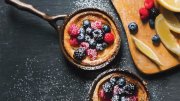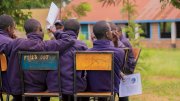Potter Ashton Keen is an artist-in-residence at Harvard’s ceramics program during this school year, and she spoke about her artistic evolution and learning to work with clay in “A Potter’s Practice.” Harvard Magazine asked Keen, who recently earned her M.F.A. and completed a pottery-making residency in Shigaraki, Japan, to share more about her artistic inspiration and practice.
What’s your favorite part of making pottery?
“My favorite part is probably throwing and then altering a form. So, you throw it on the wheel, and then you have a body, and then maybe you’re making multiple parts—like with a teapot, I’m making the spout, the lid, the handle, and then I’m adjusting it to fit the way that I want it to fit. I love the challenge of making something come to fruition—not finishing it, not having it done, not using it. The challenge of making it.”
What’s your daily inspiration?
“Poetry. I love poetry. I have a lot of favorites: Mary Oliver, Lang Leav, Lydia Davis. When I’m thinking about my work and what I want my work to say, I feel like poems just say it. I’ll read them and think, how can I make my work say what this person has said?”
What makes a good potter?
“Practice. And you have to have a lot of patience. Beyond that, everyone is different within this realm.”
How long does it take to get a piece ready for the kiln?
“Here, it’s taken me about a month and a half to make a kiln load of pots and fire them, from drying to bisquing to decorating.…When I was an undergrad, we had a competition for a charity event, to see how many objects we could make in 24 hours. And we as a class stayed all night and threw 250 bowls each. So, you can do it all day, but it’s a question of the attachment to the work.”
What’s your project at Harvard?
“I am working towards a gallery show at the end of my year here. “








